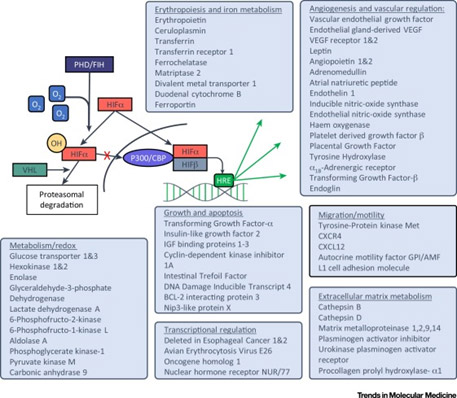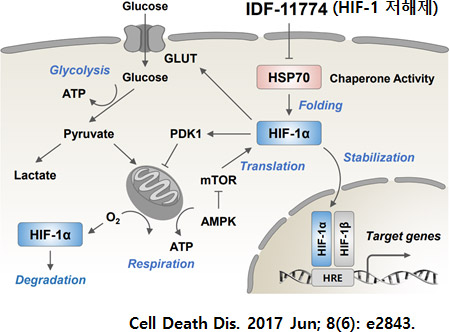Anticancer drug targeting HIF-1α
-
Background knowledge
Under hypoxic conditions, the expression of HIF-1α increases, which leads to cancer malignancy, such as increased proliferation and metastasis of cancer cells, promotion of angiogenesis, and activation of cancer metabolism.
-
Target diseases
Lung cancer, liver cancer, blood cancer, colon cancer, pancreatic cancer, etc.
-
OCG-01-1564
Anticancer efficacy shows up due to the degradation of intracellular HIF-1α protein, which is promoted by suppression of the respiratory electron transport in mitochondria. (Exp. Mol. Med. 52, 2020)
-
Current situation
Optimization
-
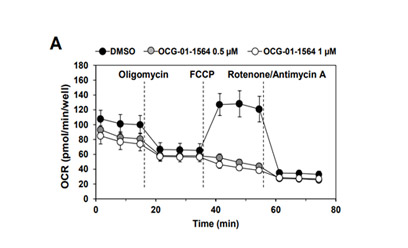 (A) Suppression of mitochondrial respiration
(A) Suppression of mitochondrial respiration -
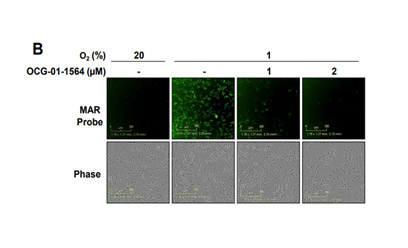 (B) Increase of intracellular oxygen level in the presence of OCG-01-1564
(B) Increase of intracellular oxygen level in the presence of OCG-01-1564 -
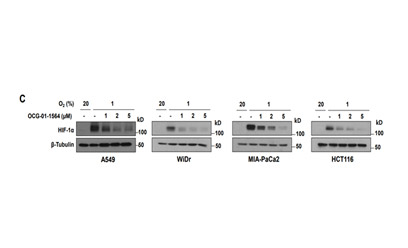 (C) Decrease of HIF-1α level by OCG-01-1564
(C) Decrease of HIF-1α level by OCG-01-1564


